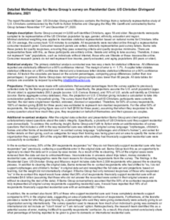The Barna Group conducted a survey of 3,000 U.S. Christians to understand their perceptions and support of orphanages.
The key objectives of this study were threefold: to estimate the total annual dollar amount that American Christians donate to residential care programs, to identify how Christians engage in short-term missions related to children in residential care programs, and to understand ways in which Christians are likely to engage in the near future, given the impact and constraints of COVID-19.
KEY FINDINGS
Donations
19% of survey respondents report financially supporting orphanages, children’s homes and other forms of residential care. Projected to the U.S. Christian population, that is an estimated 34 million individuals giving approximately $2.5 billion to these types of programs annually. While donation amounts range considerably, median reported giving per person was $300 dollars over three years, or $100 annually.
Short-Term Missions
Of respondents who had been on mission trips, 21% had visited an orphanage or children’s home. Projected to the US Christian population, 4 million Christians have visited an orphanage or children’s home on their mission trip. 72% of those who have gone on a mission trip to a residential care facility have gone with a church group.
General Perceptions
Responses suggest the U.S. Christian population is not well-educated on residential care realities. 96% agree that family structures are optimal, but also 91% believe orphanages are essential and 86% see them as positive. The next generation of U.S. Christians has a stronger preference than previous generations for supporting residential care and often holds misconceptions about the needs of the vulnerable.
COVID-19
While investigating the COVID-19 pandemic’s impact on financial support for residential care was a goal of this project, researchers were unable to detect any meaningful change. By this data alone, financial support for residential care has been annually consistent from 2018-2020.
Note: After the initial release of the report there has an update to the financial projection in October 2021, changing it from $3.3 billion to $2.5 billion a year.



